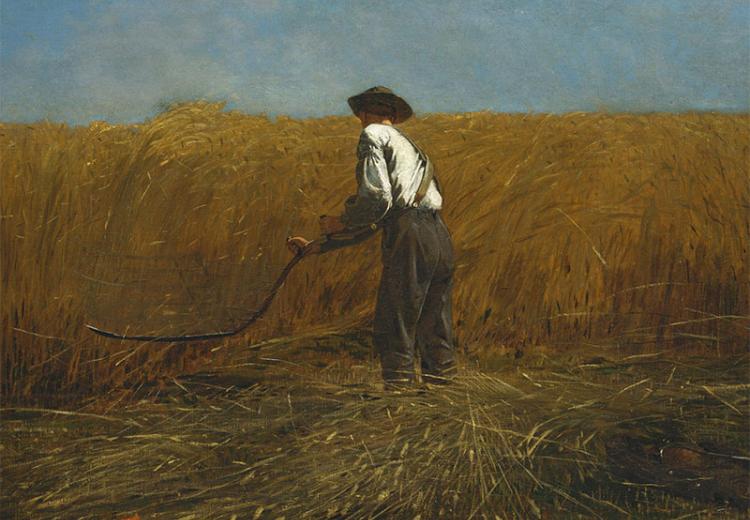Homer's Civil War Veteran: Battlefield to Wheat Field

Winslow Homer (1836–1910), The Veteran in a New Field, 1865.
"He came home so changed that his best friends did not know him, but is well & all right now."
— Henrietta Maria Benson, describing her son, Winslow Homer, when he returned from the Civil War.
How did Civil War soldiers and their torn country return to peace after four years of fighting? In this lesson students consider Civil War veterans' possible memories and emotions as they returned to civilian jobs. Students study symbolism in Winslow Homer's painting The Veteran in a New Field and compare it to a photograph of the aftermath of a Civil War battlefield. After reading James Wren's Diary entry they write about and role-play a returning veteran.
Guiding Questions
How does Winslow Homer's The Veteran in a New Field express the mood of the United States following the Civil War?
What emotions might a Civil War veteran experience as he re-enters his home life? How might these memories affect him?
Learning Objectives
Explain the symbolism in Homer's painting The Veteran in a New Field.
Effectively "put themselves in someone else's shoes" in history to better understand what veterans have overcome.
